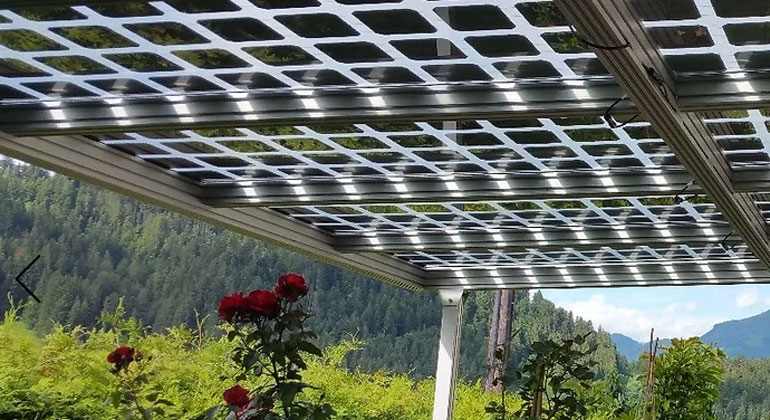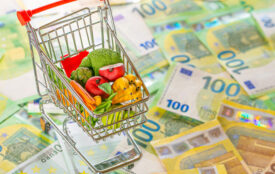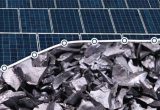Solar glass is the next production bottleneck
The EU is becoming dangerously dependent on China by ignoring this component. By Erich Merkle
When talking about the entire PV value chain, the component with the heaviest weight after solar cells is consistently neglected: solar glass.
European module production is still insignificant on a global scale, and dependence on China is dangerous. Germany and the EU want to change this massively and ramp up European production capacities. The fact that this also includes the procurement of solar glass is consistently forgotten.
The world’s best production technology for solar glass is available in Germany – demand for it comes only from China.
The Chinese plan holistically, because without solar glass, no module production is possible and for the gigantic PV expansion targets, gigantic quantities of glass are also needed. That is why the German company Grenzebach received orders from China as early as 2020 for more than 160 drawing glass lines specifically for the photovoltaic market (Solarserver, 21.5.2021). These have since been delivered to some of the 3,612 registered solar glass related companies in China. In Europe, there are just a handful of such lines, and nothing is known of plans to close this ever-widening gap. Germany offers the world’s best melting technology with world market leaders such as Sorg and Horn. France and England also have excellent suppliers. Lisec in Austria supplies the best equipment for coating and hardening technology. Almost all innovative equipment for the solar sector is delivered to China not to Europe.
The construction of a solar glass factory is a huge investment of up to 100 million €uro for a production line of optimal size with a melting capacity of 300 t. per 24 hours. The energy consumption (80% gas) and the reduction of the environmental impact (CO2 and nitrogen) cause a considerable engineering effort and long approval procedures. Therefore, the period from planning to operation of a solar glass production is 3-4 years. This is long compared to six to 10 months for a PV module production line.
One could argue that we should buy solar glass in China. However, the argument of securing a European supply chain and saving logistics costs through European production then breaks down. This increases the existential dependence on China, which is already viewed very critically. Finally, the accusation that production in China takes place under poor political and environmental conditions also weighs heavily. Several glass factories are located in the Xinjiang province, the oppressed Uyghur region. With up to 80% of a standard PV module by weight, transporting the glass is almost as costly and time-consuming as transporting the finished modules.
Gigantic expansion targets for PV production in the EU cement 90% dependence on China for a long time to come
The expansion targets for a “New European Solar Industry” are gigantic and have recently been revised significantly upwards in light of the war in Ukraine. In most cases, the expansion of production capacities is to take place along the entire value chain, i.e. from silicon to wafers and cells to module production. Strangely, one important component is always missing from this list and from the plans for gigawatt factories: the solar glass required for 99% of all modules. This indispensable component is not sufficiently available in Europe. The following arguments demonstrate this:
1. Ultra-white solar glass is mainly produced as structural glass in a rolling process. Special forming rolls are used to increase the thickness of the glass and to form a microstructure on both sides of the glass. This keeps the reflection largely in the glass, resulting in a high transmittance. The usual flat glass production is less suitable for solar glass.
2. Currently, a maximum module production of approx. 3-4 gigawatts can be achieved with solar glass produced in Europe. Nominal shares of the glass were imported from India and few other countries until 2021.
It is striking that the largest European solar glass supplier Interfloat with its manufacturing GMB Glasmanufaktur Brandenburg in Tschernitz was sold to the Indian market leader Borosil in April 2022 (PV magazine, 25.4.2022). Given that manufacturing there is fully dependent on uninterrupted gas supplies, industry insiders wondered. After all, apart from the risk of an interruption in Russian gas supplies, at today’s gas prices even cost-covering production is only possible at almost unrealistically high selling prices for the solar glass produced.
Borosil was probably more interested in the market access, especially since in approx. 3 years costs of approx. 30 million € must be raised for a then presumably pending “cold repair” of the melting tank. Borosil wants to increase its production capacity to 2,600 t/d in total by 2025. It is doubtful whether the claimed 450 t./d. will really be produced in Brandenburg. But even this amount would only be enough for about 2.5 GW module production.
3 The expansion targets published by the EU assume an expansion of European module production capacities of up to 30 GW by 2030. These were further increased after the Russian invasion of Ukraine. Even if module efficiencies increase, this would result in almost ten times the demand for solar glass in 2030 compared to 2021. The question arises as to how this demand will be met, since new production capacities for solar glass are not in sight.
4. Glass production requires a high energy input, 80% of which has to be covered by natural gas. The production is not flexible and the melting furnaces have to be heated 24 hours a day, 365 days a year. At a gas price of around €6 per MW, energy accounted for around 35% of production costs in 2020. On March 7,22 a price of €211 was quoted on the TTF Dutch Future spot market. Even if this peak price has since been reduced to € 87 (on May 27,22), no one currently expects prices below € 50 per MW to be reached in the next few years.
5. So-called hybrid furnaces can be considered as a possible alternative. The hybrid technology for glass production is convincing: with a maximum electric share of 80 % and only 20 % gas, up to 16 % energy could be saved and CO2 emissions reduced by 80 % (according to publications of the Sorg company: www.sorg .de).
However, it should be critically noted that these were developed in principle only for container glass and that no industrial plant is yet in operation even for this production.
The transformation of glass production from natural gas to green energy
Sustainable electric energy will play an important role in the transformation of the glass industry because it has the highest energy efficiency of all energy sources. However, some processes require a certain amount of energy from gas to keep the glass melting system flexible.
Hybrid furnace technology has the potential to reduce direct CO2 emissions from the furnace by 60% and from the entire plant by 50% by replacing 80% of the natural gas with renewable electricity. The CO2 reduction potential of this innovation is even higher if it can be subsequently combined with other innovative energy sources such as hydrogen (Furnaces of the Future – Hybrid Glass Fusion Technology – FEVE).
A European solar industry is essential
A European Commission official pointed out at the recent April 2022 Solar Power Summit in Brussels that solar production in Europe must be rebuilt – “whatever the cost.”
However, the current treatment of promoting a European solar industry is clearly too short-sighted: without including solar glass as the most energy-intensive and heaviest component, dependence on China for solar will remain. The current estimated 60% gap in solar glass will grow to 90% with expansion plans to several GW.
No one would think of excluding the necessary steel from consideration in the automotive production chain. But that is what is done when considering the value chain for PV module production!
“Similar to the situation with Russia, the asymmetry and one-sidedness of Germany’s dependence on China is a central problem,” said DIW President Marcel Fratzscher. China is increasingly using this as leverage against Germany and Europe. The dependence on Chinese components (including BOS components including inverters) is about 90%. It will increase with the expansion of module production in Europe.
A dependency that can only be corrected at high economic cost. This is especially true in the PV sector. The EU needs an industrial policy that consistently supports the development of strategic key industries. Certainly not a policy that ignores a dependency of more than 90% on the indispensable component solar glass in the future.
Source
Dr. Erich Merkle 2022 | Erich Merkle has been active in the PV industry for over 20 years. He was one of the pioneers in setting up the first production lines for modules in Germany as well as in building PV power plants in the megawatt range. As early as 2007/8, he planned the first German solar glass production in Brandenburg. The project was not realized due to the collapse of the PV industry in Europe and the financial crisis. Currently he is managing GridParity AG and advising AGORA s.r.o. in Slovakia on the development of a PV module production 150 MW in 2023, 450 MW from 2024) .








